ProTalk: Chris Crisman’s ‘Women’s Work’ Project
A few years ago, I met with a producer in New York City, who told me about her friend who had quit designer work and wanted to be a butcher and move to Philadelphia. Up to that point, the image in my brain of a butcher was a bulbous man, probably bald, with a bloody white apron, standing in front of his shop with his arms crossed.
That’s what the archetype was. But Heather Marold Thomason turned out to be a different person. That was intriguing to me. I reached out to do a portrait of her and that spawned another shoot, and afterward I began to feel like, “there’s something more, here.”
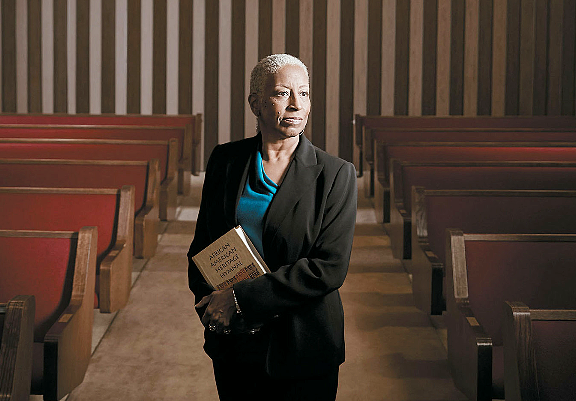
Alice Graham, Executive-Director of the Back Bay Mission
I’m no stranger to hard work. “I was born and raised in the countryside near Titusville, Pennsylvania, during the 1980s and 1990s. Growing up, my father, Richard, was a steelworker and my mother, Karen, a self-employed dog groomer who ran her business out of our home.
We had three TV stations available to us via rotary antenna, and a washtub but no shower. We grew our own food, heated our home with the wood we cut ourselves, and we rarely asked for help. No jobs were off-limits in our home. The mantra in our house was always “just keep working.”
After I graduated from high school, I had my eyes set on becoming a doctor so I enrolled at the University of Pennsylvania on a pre-med track. I figured that it might be useful to know something about photography so I took an elective course in it that eventually changed the direction of my career.

Heidi& Renae Moneymaker, MovieStuntwomen
At first, influenced by my rural roots, I specialized in landscapes which expanded to environmental portraits. I tried to portray every subject with grace, strength and dignity. After my photo shoots with Heather, that “something more, here” feeling finally turned into a project.
We began to search for more women who are in careers that historically are male-dominated. I say “we” because I have a team in-house and had ideas that were pretty blue-collar, and I think that’s me thinking blue-collar jobs photograph pretty well and offices don’t photograph quite as well.
I thought, “Hey, this is interesting because it feels different to me, and it looks different to me— putting a big body of work together showing the opposite of what you’d normally expect but which is actually the wonderful reality.” This is essentially saying: Limits to careers should not be based on sex, gender, any sort of demographic, any sort of race, any sort of anything.
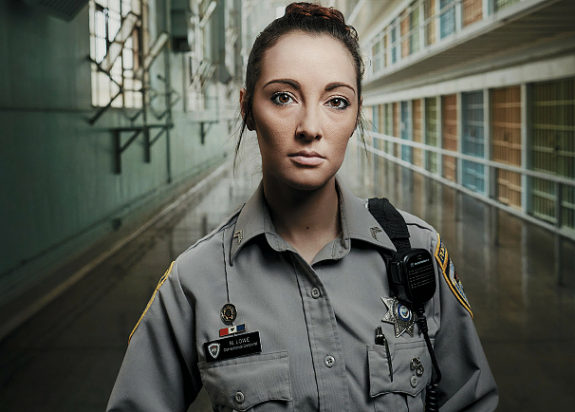
Magen Lowe, Correctional Officer
That was the start of the project. It was, again, about a curiosity about jobs that I’ve never done. I’ve done magazine editorial work for a long time, shooting all over the country. And a lot of it was about, “Oh, I want to photograph X. Anyone doing X?”
For example, I really love shrimp, and I wanted to see what it’s like to be on a shrimp boat. We ended up in a lobster boat. We ended up in a gold-mining operation for some of the original shoots. There were a lot of cool, blue-collar jobs at the get-go.
In the fall of 2016, we released an early version of the project and got a lot of feedback that suggested we reach out to more women in other careers. So we forged ahead and, in 2020 the project was released as a book.
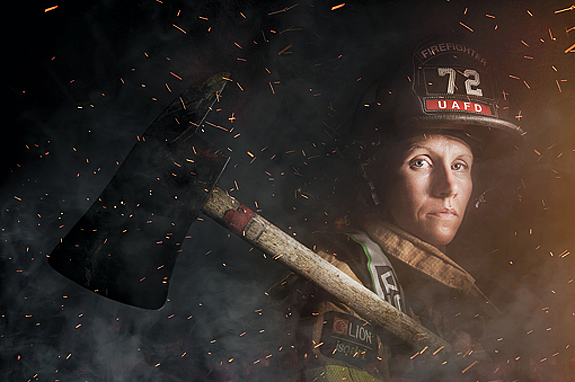
Mindy Gabriel, Firefighter
What makes Women’s Work unique, I think, is that it’s just not a collection of portraits with a brief caption under each image. Right from the beginning, we wanted these women to be heard; after all, as the book’s subtitle says, these are “Stories From Pioneering Women Shaping Our Workforce.” And we wanted them to have a major role in telling their stories.
After the book was published we began to hear from parents who had purchased the book for their young daughters and who were interested re enforcing the ideas that the book stands for. We also heard from an elementary school in France that was using the book as a teaching aid in class– both for girls and boys. I’m extremely grateful anytime this work can invite kids to dream without limits.
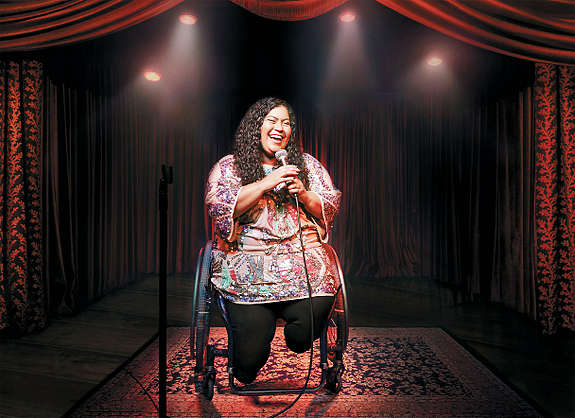
Danielle Perez, Comedian
I know some of you reading this might want to know about technical aspects. I was always a Canon shooter and a large portion of this book was shot on a pair of Canon 5Dr’s and a Dynalite Strobe kit. But in 2019 I migrated from the Canon ecosystem to Sony and from Dynalite to Profoto strobes, I’ve never been what you’d call a “gear head” and am far more interested in crafting dynamic and intricate compositions than discussing megapixels or the latest gear trends.
However, that said, there is one constant that we’ve embraced over many years—Red River paper. Our studio walls are covered with prints and our favorite stock is Aurora Natural 285 in 8×10 and 13-19 size. We also use it to print hand-bound portfolios which never cease to draw compliments from art directors and others.

Tiquicia Spence,NCO, U.S. Army
Now I’d like to take this opportunity to share my thoughts on what I’ve learned during my many years of commercial photography. Whether shooting on location or in the studio, the process should be an adventure of exploration. To create a meaningful project I think you first have to allow yourself to be led by your curiosity. I do this because I love it but it can still be hard work at times.
In my experience, to sustain the passion necessary to see a body of work like this through, you must really be engaged with and committed to the concept and subject matter. When choosing a subject, don’t think about what you think people want to see. Instead, allow the camera to be your portal to immersing yourself into wherever your curiosity takes you. It’s from that place of authentic exploration that will yield the best work.
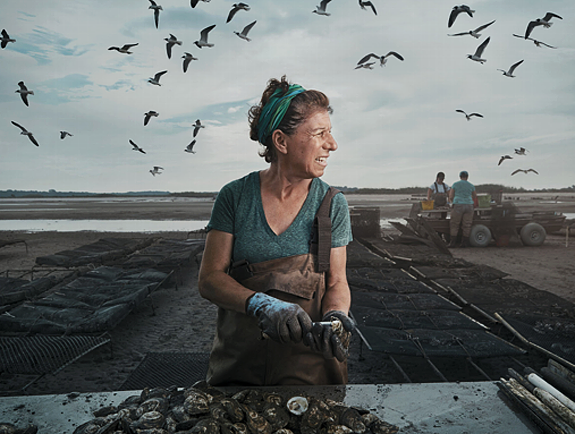
Lisa Calvo, Oyster Farmer
A big part of the Women’s Work project for me was motivated by my wish for my daughter to have an equal opportunity in life and I’m extremely grateful if this work can invite kids to dream without limits.
ABOUT THE AUTHOR:

Chris Crisman is a Philadelphia-based photographer specializing in people and environments. He has done work for major clients including Merck Pharmaceuticals, Warner Bros. Records and Allstate Insurance. His images have appeared in dozens of publications including Forbes, Business Week, American Photography, Field and Stream, Ladies Home Journal and Popular Science.
Chris Crisman’s web site is at: www.crismanphoto.com. He may be contacted at: chris [at] crismanphoto.com
Chris’ book, Women’s Work, is available at Amazon in hardcover (recommended) and electronic formats.
Original Publication Date: February 28, 2023
Article Last updated: September 14, 2023
Related Posts and Information
Please log in to leave a comment.
Categories
About Photographers
Announcements
Back to Basics
Books and Videos
Cards and Calendars
Commentary
Contests
Displaying Images
Editing for Print
Events
Favorite Photo Locations
Featured Software
Free Stuff
Handy Hardware
How-To-Do-It
Imaging
Inks and Papers
Marketing Images
Monitors
Odds and Ends
Photo Gear and Services
Photo History
Photography
Printer Reviews
Printing
Printing Project Ideas
Red River Paper
Red River Paper Pro
RRP Newsletters
RRP Products
Scanners and Scanning
Success on Paper
Techniques
Techniques
Tips and Tricks
Webinars
Words from the Web
Workshops and Exhibits
all
Archives
March, 2024
February, 2024
January, 2024
December, 2023
November, 2023
October, 2023
September, 2023
August, 2023
May, 2023
more archive dates
archive article list







